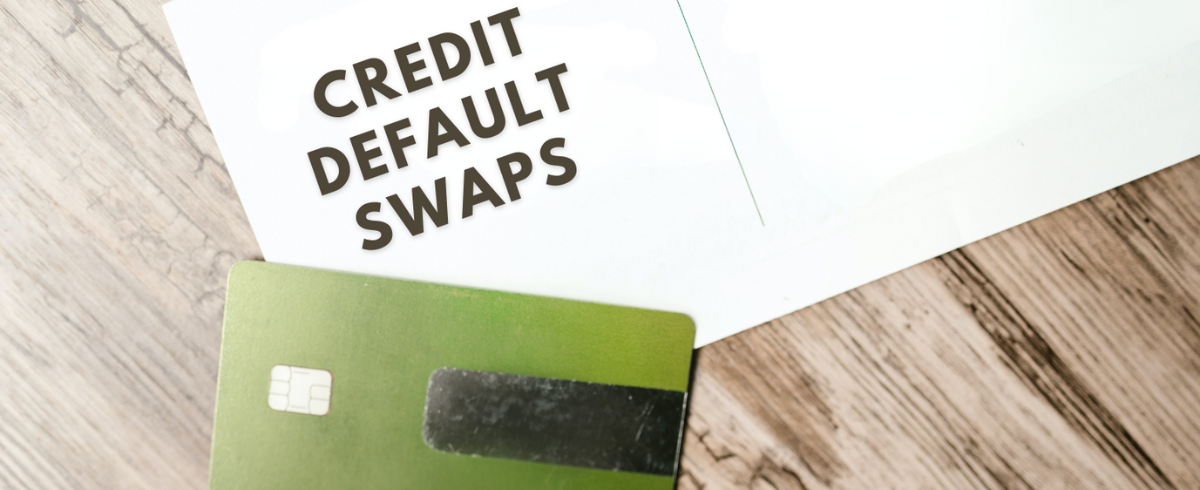By Stacie Rabinowitz
So I mentioned to Fabrice that I had been explaining credit default swaps to a friend of mine without a finance background, and he asked me to be so kind as to explain it to those of you who are also a bit in the dark about what these things are. Mostly because he’s too lazy to do it himself 🙂
To put in the usual caveats: I took finance in business school, and I’ve run this by enough bankers who agree that I seem to know what I’m saying that I’m pretty confident I have my facts right, but I have never worked with them in real life and so would love any corrections from those of you actually in the industry. Also, I am going to try to explain why I think there should have been more red flags raised about them. Yes, I am sure they had a valid functional purpose for a small base of consumers, but I think that at this point we can all safely agree that they were overissued and overtraded and in my opinion there were some warning signs to this long before banks started going under.
So what exactly is a credit default swap? Mechanics aside, functionally it is like an insurance policy for a bond. You pay someone a small premium so that if the company that issued the bond goes under, you at least get some of your principal back from this second party. It’s kind of like if I lent Fabrice money, and even though he was paying me interest on it, I was worried that with his risk-loving lifestyle he might die before he could pay me back. So, if I took out a separate insurance policy on his life so that I got my principal back (or a portion of it) in the event of his death, that would be a credit default swap.
Problem #1: A credit default swap is not actually a swap. I’m sure that the mechanics of the transaction make it a swap, but functionally it’s really an insurance policy. You can tell because many banks were making a lot of money off of them, and theoretically swaps are supposed to be zero-cost: you swap the returns on two assets, but you are also swapping the risks, and therefore the compensation for them. A typical swap: Fabrice is a French citizen, I am a US citizen. I have a company I want to start distributing wines in France, but I need French citizenship to get government approval because they’re so particular about their wines. Fabrice wants to copy someone’s successful French company in the US, but he doesn’t get the best tax breaks because he’s not a citizen. So I start Fabrice’s company, he starts mine, and we agree to swap the returns. They’re equally risky ventures, so we don’t exchange any additional money. The fact that so many people were making money off of these credit default “swaps” should have alerted someone to the fact that they were not really paying off like swaps at all, and the fact that they were being called swaps anyway, hiding their true function, meant something fishy was going on.
Problem #2: Corporate bonds pay more than US Treasury Bills (the so-called “risk-free” asset). There is a decent probability that corporations will go under and not be able to pay back their debt, whereas there is a much smaller probability that the US government will. This difference is why corporate bonds pay more than US Treasuries – investors are being compensated for their risk. The more likely a company is to go under, the higher the payouts to the bondholder because of the higher the risk the investor is assuming. Now, if I’m paying someone money to insure my bond, I am trying to buy away that risk. The value of the insurance payment should be exactly equal to the difference between the payoff to the bond and the payoff to a Treasury Bill. If I wanted to be protected against my investment counterparty going under, I should have just bought a Treasury. To use the Fabrice example from above, if I was worried he was going to die before he was able to pay me back, I should have just not lent him the money. Expected payoff from Fabrice = Value of payment * (1-probability of his death). To make this equal to the amount I could have gotten investing my money in a Certificate of Deposit at a bank, I would have to charge him extra to compensate me. This extra would be exactly equal to the insurance cost, since the company would only sell me a policy for Value of payment * (probability of his death) in order to make money. So if investors are finding it more valuable to buy the bond + CDS instead of a simple Treasury, it means that something in the market is probably mispriced. And in finance, mispricing either gets cleared out really quickly or leads to big trouble.
Problem #3: The market for these devices has been reported to have been huge multiples of the value of the underlying assets. In other words, there is $1000 being floated around in investments that pay off in case Fabrice dies based on him not being able to pay back my loan, but the loan was only $50 to begin with!
